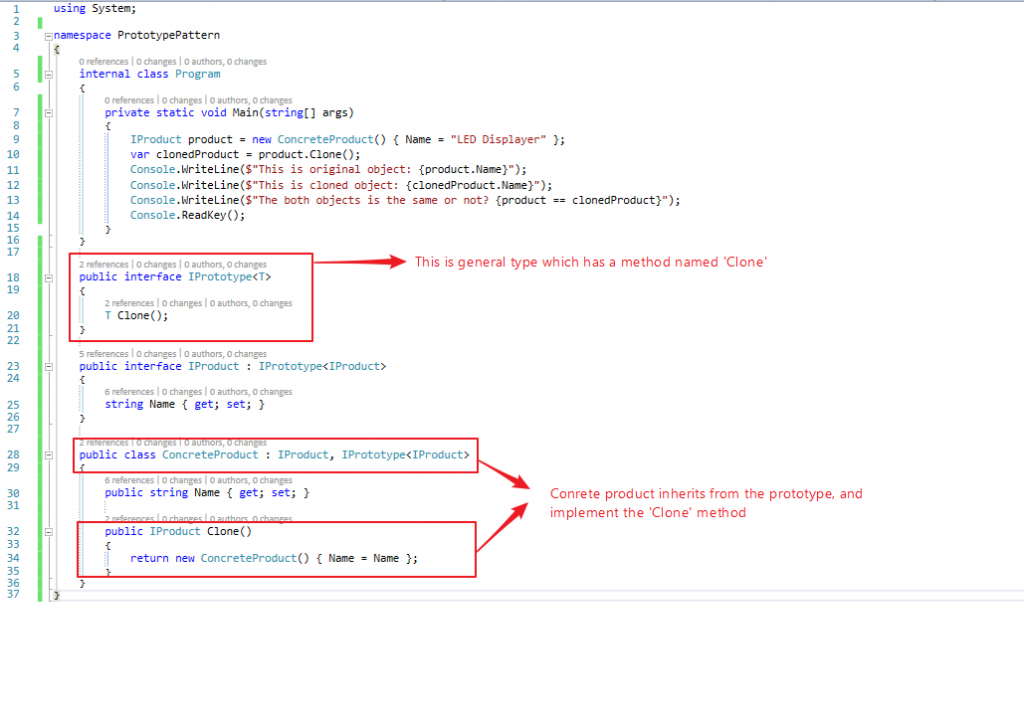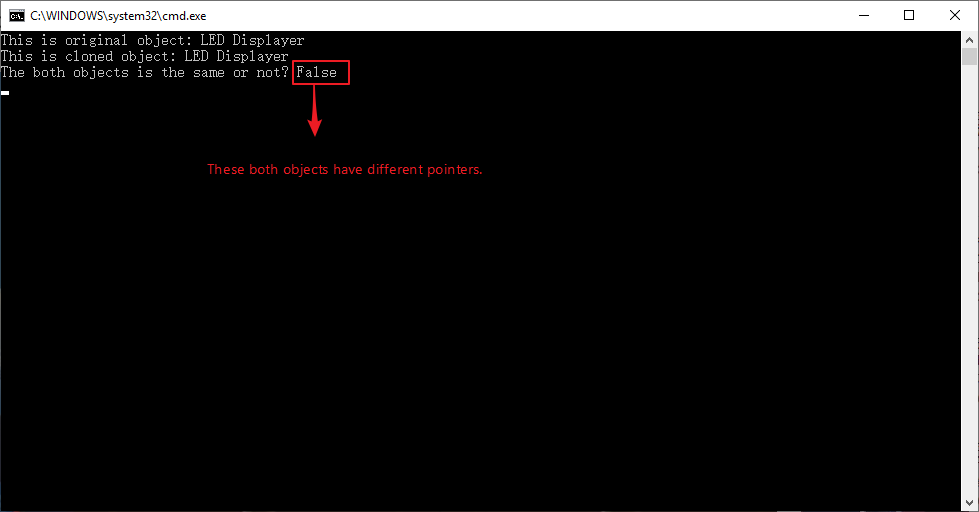距离发布上篇软件设计模式文章《建造者模式》稍稍地已经过去两个多月,今天来谈一下第五个创建型模式,这也将是最后一个创建型模式——原型模式(Prototype Pattern)。
定义:
Prototype模式,通过将对象自身进行复制来创建新的对象。多么简单的定义,该模式也很简单。
解决的问题:
- 在运行时如何动态创建一个对象的副本
怎么去解决:
- 通过定义一个含有Clone方法的Prototype接口
- 具体的实现类通过继承Prototype接口来创建自身的复制品
UML:
实例:
using System;
namespace PrototypePattern
{
internal class Program
{
private static void Main(string[] args)
{
IProduct product = new ConcreteProduct() { Name = "LED Displayer" };
var clonedProduct = product.Clone();
Console.WriteLine($"This is original object: {product.Name}");
Console.WriteLine($"This is cloned object: {clonedProduct.Name}");
Console.WriteLine($"The both objects is the same or not? {product == clonedProduct}");
Console.ReadKey();
}
}
public interface IPrototype<T>
{
T Clone();
}
public interface IProduct : IPrototype<IProduct>
{
string Name { get; set; }
}
public class ConcreteProduct : IProduct, IPrototype<IProduct>
{
public string Name { get; set; }
public IProduct Clone()
{
return new ConcreteProduct() { Name = Name };
}
}
}




One Reply to “原型模式(Prototype Pattern)-创建型模式第五篇”